 In a series of five podcasts, broadcast on BBC Radio 4 in the first week of January 2021, Amol Rajan and guests examine different aspects of inequality and consider the concept of fairness.
In a series of five podcasts, broadcast on BBC Radio 4 in the first week of January 2021, Amol Rajan and guests examine different aspects of inequality and consider the concept of fairness.
As the notes to the programme state:
The pandemic brought renewed focus on how we value those who have kept shelves stacked, transport running and the old and sick cared for. So is now the time to bring about a fundamental shift in how our society and economy work?
The first podcast, linked below, examines the distribution of wealth in the UK and how it has changed over time. It looks at how rising property and share prices and a lightly taxed inheritance system have widened inequality of wealth.
It also examines rising inequality of incomes, a problem made worse by rising wealth inequality, the move to zero-hour contracts, gig working and short-term contracts, the lack of social mobility, austerity following the financial crisis of 2007–9 and the lockdowns and restrictions to contain the coronavirus pandemic, with layoffs, people put on furlough and more and more having to turn to food banks.
Is this rising inequality fair? Should fairness be considered entirely in monetary terms, or should it be considered more broadly in social terms? These are issues discussed by the guests. They also look at what policies can be pursued. If the pay of health and care workers, for example, don’t reflect their value to our society, what can be done to increase their pay? If wealth is very unequally distributed, should it be redistributed and how?
The questions below are based directly on the issues covered in the podcast in the order they are discussed.
Podcast
Questions
- In what ways has Covid-19 been the great ‘unequaliser’?
- What scarring/hysteresis effects are there likely to be from the pandemic?
- To what extent is it true that ‘the more your job benefits other people, the less you get paid’?
- How has the pandemic affected inter-generational inequality?
- How have changes in house prices skewed wealth in the UK over the past decade?
- How have changes in the pension system contributed to inter-generational inequality?
- How has quantitative easing affected the distribution of wealth?
- Why is care work so poorly paid and how can the problem be addressed?
- How desirable is the pursuit of wealth?
- How would you set about defining ‘fairness’?
- Is a mix of taxation and benefits the best means of tackling economic unfairness?
- How would you set about deciding an optimum rate of inheritance tax?
- How do you account for the growth of in-work poverty?
- In what ways could wealth be taxed? What are the advantages and disadvantages of such taxes?
 The recent pandemic has, and will have, serious implications for our economy with some estimating the largest drop in GDP ‘in living memory’. Expenditure from disposable income fell by 60% as social distancing policies were introduced and consumers started reducing their spending.
The recent pandemic has, and will have, serious implications for our economy with some estimating the largest drop in GDP ‘in living memory’. Expenditure from disposable income fell by 60% as social distancing policies were introduced and consumers started reducing their spending.
However, despite the impact being widespread across all sectors of the economy, workers in the gig economy are at a particular financial disadvantage. A report by Fintech firm, Portify, has found that income for self-employed gig workers fell 30% in the first two weeks of April, compared to the pre-crisis average. It is estimated that there will be a loss of £1.5bn through earnings and £6.9bn in economic contributions from gig economy workers.
Chancellor Rishi Sunak announced increased benefits for the self-employed at the daily briefing on March 20th but did not guarantee their wages. This has understandably left those people who are self-employed, e.g. freelancers, with greater uncertainty. According to the Office for National Statistics, there are 5 million self-employed people in the UK, who make up 15% of the labour market.
The government has been cautious over the financial support for the self-employed, because it is more difficult to confirm how much they are earning each month. However, many of the 5 million workers would have been among the first to be impacted by the closures and restrictions caused by the outbreak.
What is the ‘gig economy’?
The gig economy has grown significantly since the last global recession of 2008/9. After a substantial number of people lost their jobs, they turned towards self-employment. A boom in digital platforms, such as Uber and Deliveroo, has sparked a revolution in the world of work, with as many as one in 10 working-age adults now working in the gig economy, up from one in 20 in 2016. According to the Association of Independent Professionals and the Self-Employed (IPSE), prior to the coronavirus outbreak, self-employed people contributed £305bn to the British economy.
A gig economy is where workers are paid for the ‘gigs’ they do, e.g. a parcel delivery or taxi ride. They receive the money for the completed job instead of a regular wage. In the UK it is estimated that 5 million people are employed in this type of capacity. Flexible hours and controlling the amount you work is appealing for many people wanting to manage their home life and other priorities.
In the gig economy, workers are classed as independent contractors. This is also beneficial for employers as they only need to pay their workers when there is work available. Therefore, when demand drops, they don’t have to get rid of staff or have to incur unnecessary staff costs. However, this also has its drawbacks for the worker. They have no protection against unfair dismissal, no right to redundancy payments, and no right to receive the national minimum wage, paid holiday or sickness pay.
Impact of the coronavirus on the gig economy
Anybody experiencing symptoms of the virus have been told to self-isolate. Employees who are then self-isolating can access statutory sick pay from the first day they are off. However, it is unclear if this applies to gig-economy workers. Unions that represent such workers have raised their concerns over the uncertainty and have demanded that urgent action is needed on working practices, including on sick pay. The United Private Hire Drivers (UPHD) union said:
Without access to worker rights such as minimum wage and sick pay, drivers who are infected may simply not be able to afford to stop working.
Work and Pensions Minister, Justin Tomlinson, has said that gig economy workers can apply for universal credit (which can take five weeks to come through) if they need to self-isolate. However, this is not an option for those who live hand-to-mouth. The government has indicated it wanted to do more for the self-employed but it is operationally difficult. Robert Jenrick, the Communities Secretary, said:
The purpose of our employment mechanism is to help continue the connection between employees and their business so once this is over – and it will be over – those individuals can return to their usual work and that link isn’t broken.
 However, six days after the Chancellor’s initial support package was announced, he announced a new self-employed income support scheme, which will cover up to 80% of self-employed workers’ average taxable monthly profits. This taxable grant is to be paid in a lump sum in June and will no doubt provide a vital lifeline for those workers who have seen their income disappear almost overnight.
However, six days after the Chancellor’s initial support package was announced, he announced a new self-employed income support scheme, which will cover up to 80% of self-employed workers’ average taxable monthly profits. This taxable grant is to be paid in a lump sum in June and will no doubt provide a vital lifeline for those workers who have seen their income disappear almost overnight.
Those who are eligible will receive a taxable grant amounting to 80% of the average profits from the last three tax years. HMRC will use the total trading profit for the last three tax years and use this to calculate a monthly amount. However, annual profits are taken after expenses and capital allowances, but before pension contributions and charitable donations. Therefore, workers who have made significant investments into their businesses are likely to lose out.
What next?
The Independent Workers Union of Great Britain (IWGB), which represents gig-economy workers, has announced that it is suing the government over its failure to protect the wages and jobs of millions of workers during the pandemic. It has also accused the government of failing to ensure the health and safety of those still employed through proper sick pay. It has also argued that the lack of certainty encourages those potentially infected to continue working so they can still receive a wage.
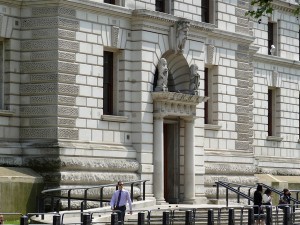 The current scheme is only planned to cover the next three months. However, it is questionable whether this will be enough, and the government may have to extend the support.
The current scheme is only planned to cover the next three months. However, it is questionable whether this will be enough, and the government may have to extend the support.
There is also concern around how much of the gig economy (besides delivery and distribution workers) will remain once the restrictions are eased. Ryan Barnett, an IPSE economist predicts the economic impact to be far more severe than the 2008 financial crisis, pointing out that many entertainment industry workers have already had jobs cancelled until the end of 2021. Even when we can re-emerge from the current lockdown, it is likely that many workers will continue to rely on Universal Credit for a prolonged period of time.
Conclusion
There is no doubt that the current situation has had an impact on the daily lives of everyone in the economy. However, the level of uncertainty for those working in the gig economy has been concerning for many of the 5 million people.
The full impact of the crisis will not be known until some time after the lockdown. However, it is what measures are put in place in the short run that will have an impact and provide a greater level of certainty for the self-employed. It is important that the government understands the importance of supporting self-employment throughout the crisis, as the self-employed will likely play a key role in the economic activity and recovery that will follow.
Articles
Questions
- Explain why many economies have seen an increase in the gig economy over the last decade.
- What are the advantages and disadvantages of a gig economy?
- How does the gig economy impact on the flexibility of the labour market in the UK?
 According to a new report, Time for Change published by the Institute for Public Policy Research (IPPR), ‘The British economic model needs fundamental reform.’
According to a new report, Time for Change published by the Institute for Public Policy Research (IPPR), ‘The British economic model needs fundamental reform.’
It is no longer generating rising earnings for a majority of the population, and young people today are set to be poorer than their parents. Beneath its headlines figures, the economy is suffering from deep and longstanding weaknesses, which make it unfit to face the challenges of the 2020s.
The report by the IPPR’s Commission on Economic Justice is an interim one, with the final report due in the latter part of next year. The commission was set up in 2016 and includes business leaders, such as the heads of John Lewis and Siemens, the TUC General Secretary, the Archbishop of Canterbury and other leading figures.
Commenting on the interim report, Justin Welby, the Archbishop of Canterbury said
Our economic model is broken. Britain stands at a watershed moment where we need to make fundamental choices about the sort of economy we need. We are failing those who will grow up into a world where the gap between the richest and poorest parts of the country is significant and destabilising
The report found that wages have stagnated for the majority of the population since the financial crisis of 2007/8. Wage income has fallen as a proportion of national income, while the proportions going to income from profits and property have risen. Young people are poorer than previous generations of young people.
Despite low unemployment, many people are on zero-hour contracts, part-time contracts or employed on a casual basis. For many, their jobs are insecure and they have no bargaining power.
 The UK for many years has had a lower rate of investment that other developed economies and productivity, in terms of output per hour, is the lowest of its major competitors. Productivity in Germany is 36% higher than in the UK; in France and the USA it is 29% higher. Although there are some internationally competitive UK firms with high productivity, the country has:
The UK for many years has had a lower rate of investment that other developed economies and productivity, in terms of output per hour, is the lowest of its major competitors. Productivity in Germany is 36% higher than in the UK; in France and the USA it is 29% higher. Although there are some internationally competitive UK firms with high productivity, the country has:
a longer ‘tail’ of low-productivity businesses, in which weak management and poor use of skills leads to ‘bad jobs’ and low wages.
There are many other challenges, including an ageing population, uncertainties from Brexit, a large current account deficit, increased competition from abroad and growth once more in private-sector debt, which means that consumption may cease to be the main driver of economic growth as people seek to curb their borrowing.
The report is also critical of fiscal policy, which with record low interest rates could have been used to finance infrastructure projects as well as supporting public services.
The report recommends three approaches:
The first is institutional reform to support investment.
The second is making the economy more competitive through a coherent industrial strategy, reform of the financial sector to support long-term investment, reform of corporate governance to promote business success and tackling the market dominance of companies such as Amazon and Google.
The third is to bring greater social justice and equality through encouraging more secure and better-paid jobs, strengthening trades unions and reforming the tax system to make it fairer and smarter.
Not surprisingly the government has defended its record of reducing debt, presiding over falling unemployment and reduced inequality as measured by a reduced Gini coefficient. However, there has only been a modest fall in the Gini coefficient, from 0.333 in 2009/10 to 0.315 in 2016/7, and this has largely been the result of the very rich seeing a decline in income from assets.
Articles
Britain’s economy is broken and failing to tackle inequality, says major new report Independent, Ben Chu (6/9/17)
UK’s economic model is broken, says Archbishop of Canterbury The Guardian, Phillip Inman (5/9/17)
Tax wealth or see the UK tear itself apart, Cable will warn Bloomberg, Alex Morales and Thomas Penny (6/9/17)
Archbishop of Canterbury calls for radical economic reform BBC News (5/9/17)
Archbishop warns economy is “broken” as report reveals longest period of wage stagnation for 150 years Huffington Post, Rachel Wearmouth (6/9/17)
Britain’s economy is broken. We desperately need new ideas The Guardian, Tom Kibasi (4/6/17)
Carney: Britain is in the ‘first lost decade since the 1860s’, Business Insider, Oscar Williams-Grut (6/12/16)
Our broken economy, in one simple chart New York Times, David Leonhardt (7/8/16)
Report
Time for Change: A new Vision for the British Economy IPPR Commission on Economic Justice (6/9/17)
Questions
- Why have wages for the majority of the UK population stagnated for the past 10 years?
- Why is productivity in the UK lower than in most other developed economies?
- Is it possible for poor people to become poorer and yet for the Gini coefficient to fall?
- What institutional reforms would you suggest to encourage greater investment?
- Explain the possible advantages and disadvantages of abandoning ‘austerity policy’ and adopting a more expansionist fiscal stance?
- Does it matter that Amazon and Google are dominant players in their respective markets? Explain.
 The UK Chancellor of the Exchequer, Philip Hammond, announced in the Budget this week that national insurance contributions (NICs) for self-employed people will rise from 9% to 11% by 2019. These are known as ‘Class 4’ NICs. The average self-employed person will pay around £240 more per year, but those on incomes over £45,000 will pay £777 more per year. Many of the people affected will be those working in the so-called ‘gig economy’. This sector has been growing rapidly in recent years and now has over 4 million people working in it.
The UK Chancellor of the Exchequer, Philip Hammond, announced in the Budget this week that national insurance contributions (NICs) for self-employed people will rise from 9% to 11% by 2019. These are known as ‘Class 4’ NICs. The average self-employed person will pay around £240 more per year, but those on incomes over £45,000 will pay £777 more per year. Many of the people affected will be those working in the so-called ‘gig economy’. This sector has been growing rapidly in recent years and now has over 4 million people working in it.
Workers in the gig economy are self employed, but are often contracted to an employer. They are paid by the job (or ‘gig’: like musicians), rather than being paid a wage. Much of the work is temporary, although many in the gig economy, such as taxi drivers and delivery people stick with the same job. The gig economy is just one manifestation of the growing flexibility of labour markets, which have also seen a rise in temporary employment, part-time employment and zero-hour contracts.
 Working in the gig economy provides a number of benefits for workers. Workers have greater flexibility in their choice of hours and many work wholly or partly from home. Many do several ‘gigs’ simultaneously, which gives variety and interest.
Working in the gig economy provides a number of benefits for workers. Workers have greater flexibility in their choice of hours and many work wholly or partly from home. Many do several ‘gigs’ simultaneously, which gives variety and interest.
In terms of economic theory, this flexibility gives workers a greater opportunity to work the optimal amount of time. This optimum involves working up to the point where the marginal benefit from work, in terms of pay and enjoyment, equals the marginal cost, in terms of effort and sacrificed leisure.
For firms using people from the gig economy, it has a number of advantages. They are generally cheaper to employ, as they do not need to be paid sick pay, holiday pay or redundancy; they are not entitled to parental leave; there are no employers’ national insurance contributions to pay (which are at a rate of 13.8% for employers); the minimum wage does not apply to such workers as they are not paid a ‘wage’. Also the firm using such workers has greater flexibility in determining how much work individuals should do: it chooses the amount of service it buys in a similar way that consumers decide how much to buy.
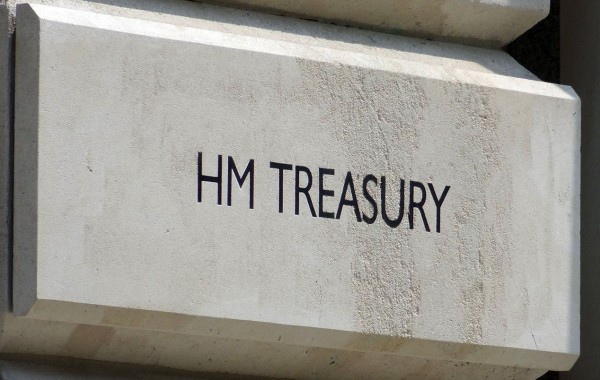 Many of these advantages to firms are disadvantages to the workers in the gig economy. Many have little bargaining power, whereas many firms using their services do. It is not surprising then that the Chancellor’s announcement of a 2 percentage point rise in NICs for such people has met with such dismay by the people affected. They will still pay less than employed people, but they claim that this is now not enough to compensate for the lack of benefits they receive from the state or from the firms paying for their services.
Many of these advantages to firms are disadvantages to the workers in the gig economy. Many have little bargaining power, whereas many firms using their services do. It is not surprising then that the Chancellor’s announcement of a 2 percentage point rise in NICs for such people has met with such dismay by the people affected. They will still pay less than employed people, but they claim that this is now not enough to compensate for the lack of benefits they receive from the state or from the firms paying for their services.
Some of the workers in the gig economy can be seen as budding entrepreneurs. If you have a specialist skill, you may use working in the gig economy as the route to setting up your own business and employing other people. A self-employed plumber may set up a plumbing company; a management consultant may set up a management consultancy agency. Another criticism of the rise in Class 4 NICs is that this will discourage such budding entrepreneurs and have longer-term adverse supply-side effects on the economy.
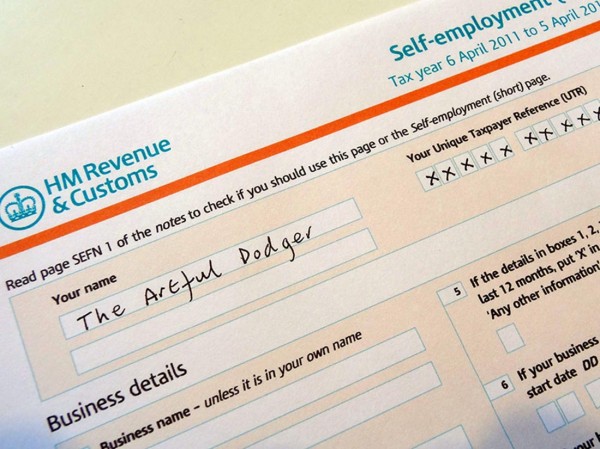 As far as the government is concerned, there is a worry about people moving from employment to self-employment as it tends to reduce tax revenues. Not only will considerably less NIC be paid by previous employers, but the scope for tax evasion is greater in self-employment. There is thus a trade-off between the extra output and small-scale investment that self-employment might bring and the lower NIC/tax revenue for the government.
As far as the government is concerned, there is a worry about people moving from employment to self-employment as it tends to reduce tax revenues. Not only will considerably less NIC be paid by previous employers, but the scope for tax evasion is greater in self-employment. There is thus a trade-off between the extra output and small-scale investment that self-employment might bring and the lower NIC/tax revenue for the government.
Articles
Thriving in the gig economy Philippine Daily Inquirer, Michael Baylosis (10/3/17)
6 charts that show how the ‘gig economy’ has changed Britain – and why it’s not a good thing Business Insider, Ben Moshinsky (21/2/17)
What is the ‘gig’ economy? BBC News, Bill Wilson (10/2/17)
Great Freelance, Contract and Part-Time Jobs for 2017 CareerCast (10/3/17)
We have the laws for a fairer gig economy, we just need to enforce them The Guardian, Stefan Stern (7/2/17)
The gig economy will finally have to give workers the rights they deserve Independent, Ben Chu (12/2/17)
Gig economy chiefs defend business model BBC News (22/2/17)
Spring Budget 2017 tax rise: What’s the fuss about? BBC News, Kevin Peachey (9/3/17)
Self-employed hit by national insurance hike in budget The Guardian, Simon Goodley and Heather Stewart (8/3/17)
What national insurance is – and where it goes The Conversation, Jonquil Lowe (10/3/17)
Britain’s tax raid on gig economy misses the mark Reuters, Carol Ryan (9/3/17)
Economics collides with politics in Philip Hammond’s budget The Economist (9/3/17)
UK government publications
Contract types and employer responsibilities – 5. Freelancers, consultants and contractors GOV.UK
Spring Budget 2017 GOV.UK (8/3/17)
Spring Budget 2017: documents HM Treasury (8/3/17)
National Insurance contributions (NICs) HMRC and HM Treasury (8/3/17)
Questions
- Give some examples of work which is generally or frequently done in the gig economy.
- What are the advantages and disadvantages to individuals from working in the gig economy?
- What are the advantages and disadvantages to firms from using the services of people in the gig economy rather than employing people?
- In the case of employed people, both the employees and the employers have to pay NICs. Would it be fair for both such elements to be paid by self-employed people on their own income?
- Discuss ways in which the government might tax the firms which buy the services of people in the gig economy.
- How does the rise of the gig economy affect the interpretation of unemployment statistics?
- What factors could cause a substantial growth in the gig economy over the coming years?
 When UK unemployment was 7.7% in July 2013, Mark Carney, the newly arrived governor of the Bank of England, said that the Bank would probably have to rise interest rates when the unemployment rate dropped below 7%. Below that rate, it was expected that inflation would rise. In other words, 7% was the NAIRU – the non-accelerating rate of inflation. The most recent figure for the unemployment rate is 4.8% and yet the Bank of England has not raised interest rates. In fact, in response to the Brexit vote, it cut Bank Rate from 0.5% to 0.25% in August last year. (Click here for a PowerPoint of the chart below.)
When UK unemployment was 7.7% in July 2013, Mark Carney, the newly arrived governor of the Bank of England, said that the Bank would probably have to rise interest rates when the unemployment rate dropped below 7%. Below that rate, it was expected that inflation would rise. In other words, 7% was the NAIRU – the non-accelerating rate of inflation. The most recent figure for the unemployment rate is 4.8% and yet the Bank of England has not raised interest rates. In fact, in response to the Brexit vote, it cut Bank Rate from 0.5% to 0.25% in August last year. (Click here for a PowerPoint of the chart below.)
The NAIRU is a similar, although not identical, concept to the natural rate of unemployment. The natural rate is the equilibrium rate consistent with an overall long-term balance of aggregate labour demand and supply: i.e. the rate after short-term cyclical movements in unemployment have been discounted. It is thus a long-term concept.
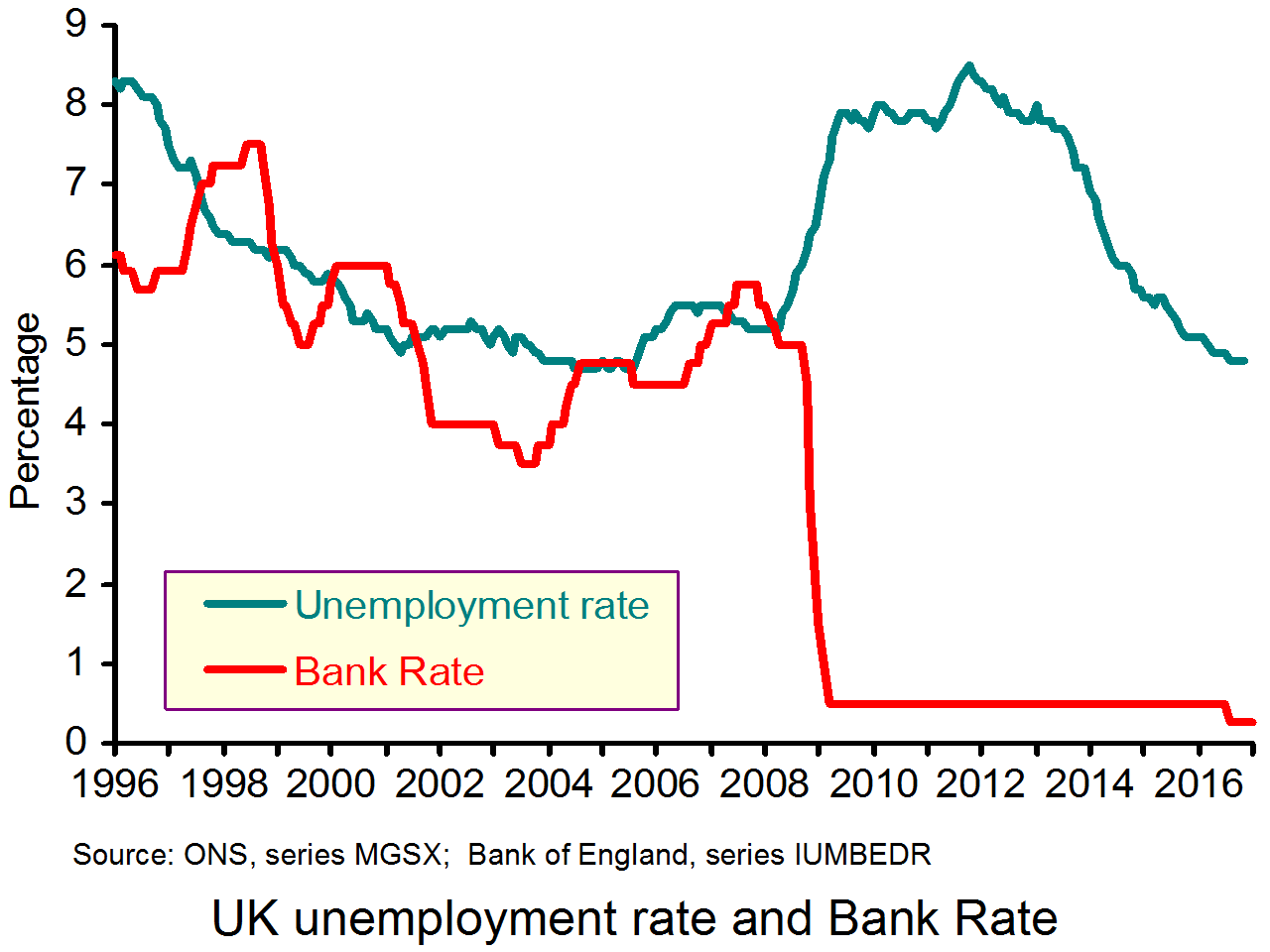 The NAIRU, although similar, focuses on the relationship between inflation and unemployment. With inflation caused solely by demand-side factors, the natural rate and the NAIRU will be similar if not identical. However, if cost-push factors change – say there is a poor harvest, which pushes up food prices and inflation (temporarily), or a substantial depreciation of the exchange rate caused by political factors (such as Brexit) – the NAIRU would increase, at least in the short term, as a higher rate of unemployment would be necessary to stop inflation rising. In the long term, although being defined differently, the NAIRU and the natural rate will be the same.
The NAIRU, although similar, focuses on the relationship between inflation and unemployment. With inflation caused solely by demand-side factors, the natural rate and the NAIRU will be similar if not identical. However, if cost-push factors change – say there is a poor harvest, which pushes up food prices and inflation (temporarily), or a substantial depreciation of the exchange rate caused by political factors (such as Brexit) – the NAIRU would increase, at least in the short term, as a higher rate of unemployment would be necessary to stop inflation rising. In the long term, although being defined differently, the NAIRU and the natural rate will be the same.
In practice, because the Bank of England is targeting inflation at a 24-month time horizon, the NAIRU for the UK at that point could also be seen as the natural rate.
So with the Bank of England not raising interest rates despite the considerable fall in the unemployment rate, does this imply a fall in the natural rate of unemployment? The answer is yes. The reason has to do with changes in the structure of the labour market.
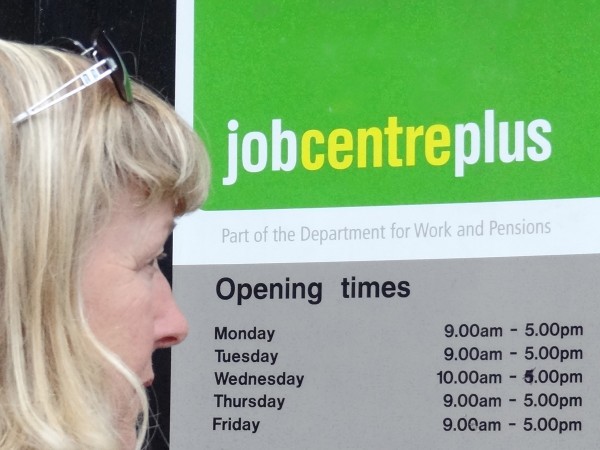 The proportion of young people and women with children returning to the labour market has fallen. Such people have a higher-than-average rate of unemployment since they typically spend a period of time searching for a job.
The proportion of young people and women with children returning to the labour market has fallen. Such people have a higher-than-average rate of unemployment since they typically spend a period of time searching for a job.
Tax and benefit reforms over the years have increased the incentive for the unemployed to take work.
Perhaps the biggest factor is a greater flexibility in the labour market. As union power has waned and as people are increasingly working on flexible contracts, including zero-hour contracts, so this has moderated wage increases. At the same time, many firms are facing increased competition both from abroad and domestically via the Internet. This has put downward pressure on prices and hence on the wages firms are willing to pay.
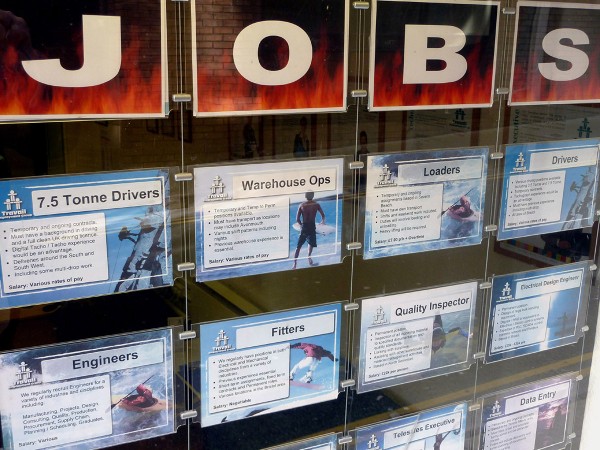 The effect has been a fall in the NAIRU and probably the natural rate. Frictions in the labour market have reduced and people losing their jobs because of changes in industrial structure find it easier to get jobs in low-skilled service industries, where employers’ risks of taking on such workers have fallen because of the loss of rights for such workers.
The effect has been a fall in the NAIRU and probably the natural rate. Frictions in the labour market have reduced and people losing their jobs because of changes in industrial structure find it easier to get jobs in low-skilled service industries, where employers’ risks of taking on such workers have fallen because of the loss of rights for such workers.
So what is the natural rate of unemployment today? It is certainly much lower than 7%; the consensus is that it is probably below 5%. As Kristin Forbes, External MPC Member of the Bank of England stated in a recent speech:
[Unemployment] is forecast to increase gradually from its current 4.8% to a high of 5.0% in the second half of 2017, before falling back to its current rate by the end of 2019. To put this in context, 5.0% was previously believed to be around the UK’s natural rate of unemployment – the rate below which unemployment could not fall without wages picking up to levels inconsistent with sustaining inflation around the 2% target. Unemployment at 5.0% is also below the average unemployment rate for the UK over the pre-crisis period from 1997 to 2007 (when it was 5.5%).
She went on to discuss just what the figure is for the natural, or ‘equilibrium’, rate of unemployment (U*). One problem here is that there is considerable uncertainty over the figure in the current forecast made by the Bank.
[An] assumption in the forecast about which there is substantial uncertainty is of the equilibrium unemployment rate – or U* for short. Since I have been on the MPC, the Committee has assumed that U* was around 5%. This implied that the more by which unemployment exceeded 5%, the more slack existed in the economy, and the less upward momentum would be expected in wages (controlling for other factors, such as productivity growth).
 As part of our annual assessment of regular supply-side conditions this January, Bank staff presented several pieces of analysis that suggested U* may be lower than 5% today [see, for example]. The majority of the MPC voted to lower our estimate of U* to 4.5%, based partly on the persistent weakness of wage growth over the past few years after accounting for other factors in our models. [See page 20 of the February 2017 Inflation Report.]
As part of our annual assessment of regular supply-side conditions this January, Bank staff presented several pieces of analysis that suggested U* may be lower than 5% today [see, for example]. The majority of the MPC voted to lower our estimate of U* to 4.5%, based partly on the persistent weakness of wage growth over the past few years after accounting for other factors in our models. [See page 20 of the February 2017 Inflation Report.]
My own assessment, however, suggested that although U* was likely lower than 5% today, it is likely not as low as 4.5%. If true, this would suggest that there is less slack in the economy than in the MPC’s central forecast, and wage growth and inflation could pick up faster than expected.
Against that, however, uncertainty related to Brexit negotiations could make firms more cautious about raising wages, thereby dampening wage growth no matter where unemployment is relative to its equilibrium. Moreover, even if we could accurately measure the level of U* in the economy today, it could easily change over the next few years as the labour force adjusts to any changes in the movement of labour between the UK and European Union.
Determining the precise figure of the current natural rate of unemployment, and predicting it for the medium term, is very difficult. It involves separating out demand-side factors, which are heavily dependent on expectations. It also involves understanding the wage elasticity of labour supply in various markets and how this has been affected by the increased flexibility of these markets.
Articles
When will Britons get a pay rise? The Guardian, Phillip Inman (26/2/17)
BoE decision, Inflation Report – Analysts react DigitalLook, Alexander Bueso (2/2/17)
Bank of England hikes UK economic growth forecasts but warns of rising inflation The Telegraph, Szu Ping Chan (2/2/17)
Bank of England publications
Inflation Report Bank of England (February 2017)
A MONIAC (not manic) economy Bank of England Speeches, Kristin Forbes (8/2/17)
The labour market Bank of England Speeches, Michael Saunders (31/1/17)
Questions
- Distinguish between the following terms: natural rate of unemployment, NAIRU, equilibrium rate of unemployment, disequilibrium rate of unemployment.
- For what reasons did the Monetary Policy Committee members feel that the equilibrium rate of unemployment might be as low as 4.25%?
- Why might it be as high as 5%?
- How are changes in migration trends likely to affect (a) wage growth and (b) unemployment?
- How is the amount of slack in an economy measured? What impact does the degree of slack have on wage growth and inflation?
- What is meant by the ‘gig’ economy? How has the development of the gig economy impacted on unemployment and wages?
- Why has there been a considerable rise in self employment?
- How may questions of life style choice and control over the hours people wish to work impact on the labour market?
- If people are moving jobs less frequently, does this imply that the labour market is becoming less flexible?
- Why may firms in the current climate be cautious about raising wages even if aggregate demand picks up?
 In a series of five podcasts, broadcast on BBC Radio 4 in the first week of January 2021, Amol Rajan and guests examine different aspects of inequality and consider the concept of fairness.
In a series of five podcasts, broadcast on BBC Radio 4 in the first week of January 2021, Amol Rajan and guests examine different aspects of inequality and consider the concept of fairness. Rethink fairness: wealth
Rethink fairness: wealth The recent pandemic has, and will have, serious implications for our economy with some estimating the largest drop in GDP ‘in living memory’. Expenditure from disposable income fell by 60% as social distancing policies were introduced and consumers started reducing their spending.
The recent pandemic has, and will have, serious implications for our economy with some estimating the largest drop in GDP ‘in living memory’. Expenditure from disposable income fell by 60% as social distancing policies were introduced and consumers started reducing their spending. However, six days after the Chancellor’s initial support package was announced, he announced a new self-employed income support scheme, which will cover up to 80% of self-employed workers’ average taxable monthly profits. This taxable grant is to be paid in a lump sum in June and will no doubt provide a vital lifeline for those workers who have seen their income disappear almost overnight.
However, six days after the Chancellor’s initial support package was announced, he announced a new self-employed income support scheme, which will cover up to 80% of self-employed workers’ average taxable monthly profits. This taxable grant is to be paid in a lump sum in June and will no doubt provide a vital lifeline for those workers who have seen their income disappear almost overnight.  The current scheme is only planned to cover the next three months. However, it is questionable whether this will be enough, and the government may have to extend the support.
The current scheme is only planned to cover the next three months. However, it is questionable whether this will be enough, and the government may have to extend the support. 









